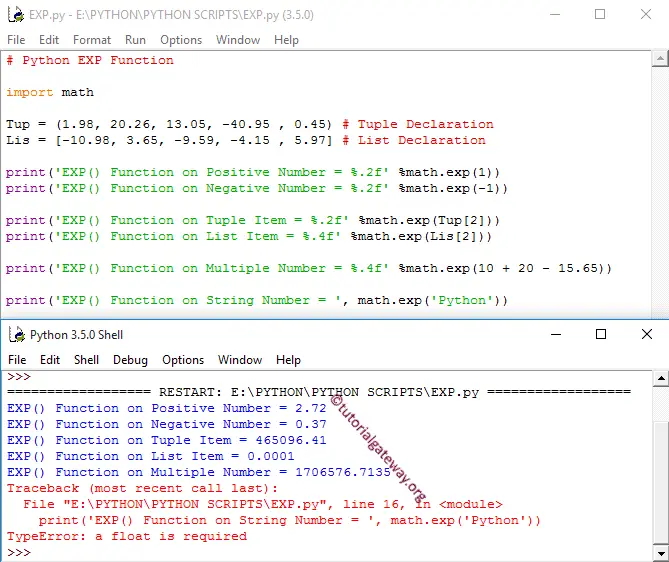The Python exp math function is used to calculate the power of exponential E, Where E is Euler’s number approximately equal to 2.71828. In this section, we discuss how to use exponential in Python Programming language with example.
The syntax of the Python math exp Function is
math.exp(number);
It can be a number or a valid numerical expression that represents the exponential value. If the number argument is a positive or negative number, exp function returns the output. And If it is not a number, it returns TypeError.
Python exp Function Example
The exp Function calculates the power of Euler’s number E. In this exp example, We are going to find the exponential check values of different data types and display the output.
import math
Tup = (1.98, 20.26, 13.05, -40.95 , 0.45) # Tuple Declaration
Lis = [-10.98, 3.65, -9.59, -4.15 , 5.97] # List Declaration
print('EXP() Function on Positive Number = %.2f' %math.exp(1))
print('EXP() Function on Negative Number = %.2f' %math.exp(-1))
print('EXP() Function on Tuple Item = %.2f' %math.exp(Tup[2]))
print('EXP() Function on List Item = %.4f' %math.exp(Lis[2]))
print('EXP() Function on Multiple Number = %.4f' %math.exp(10 + 20 - 15.65))
print('EXP() Function on String Number = ', math.exp('Python'))

- Within the first two statements, we used it with both the Positive integer and negative integer values as arguments.
- Next two statements, We used the exp Function on Tuple and List items. If you observe the above Python screenshot, this Math function is working perfectly on them.
- We tried directly on multiple values.
- In the last statement, we used on the String value, and it returns TypeError.
